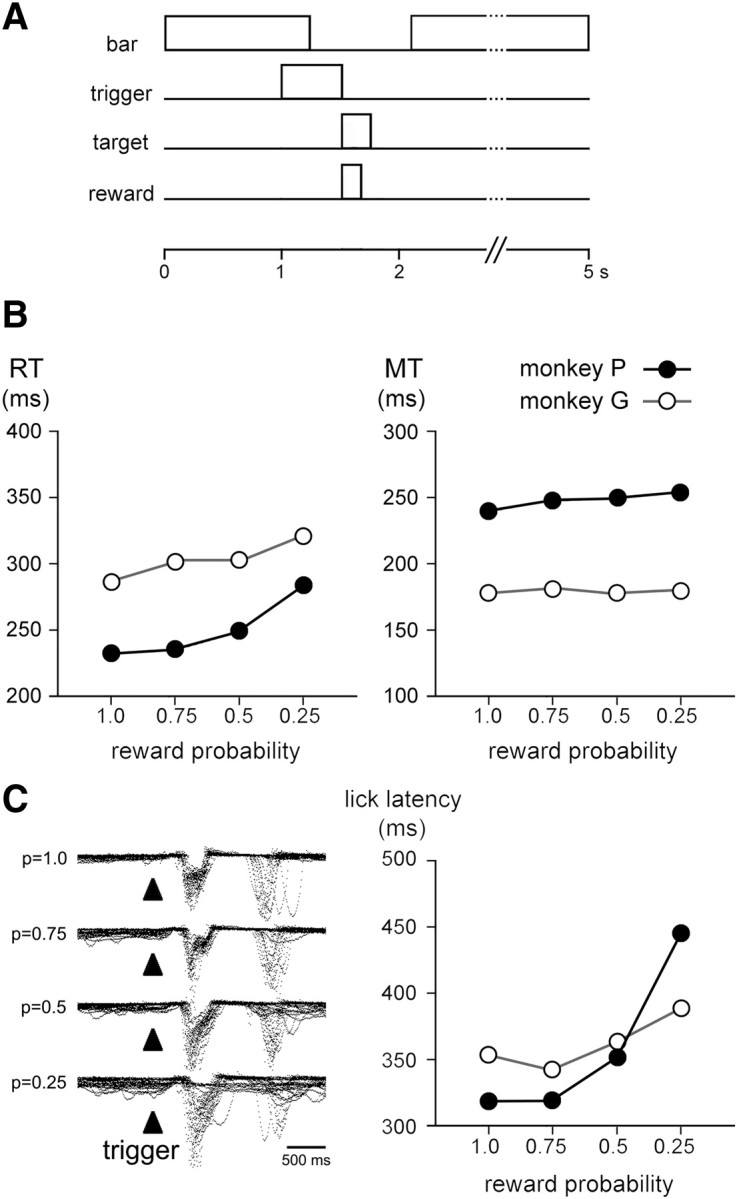Figure 1.

Temporal sequence of task events and behavior at different reward probabilities. A, Reaching task used for behavioral testing. A trial started with the monkey with its hand on a bar waiting for the trigger stimulus. In response to the presentation of this stimulus, the animal released the bar and reached the target. Depending upon the reward probabilities, target contact resulted in either the delivery or omission of reward. Four different probabilities of reward (0.25, 0.5, 0.75, and 1.0) were tested in separate blocks of 40–70 trials and the same stimulus served as a trigger for movement. Irregular time intervals of 4.0–4.7 s occurred between reward delivery and the subsequent trigger stimulus. B, Reaching task performance as a function of the reward probability for the two monkeys. Each value was obtained by calculating the mean for all trials. The data for each probability condition were taken from 689, 1333, 1240, and 526 trials for monkey P and 792, 1432, 1041, and 1394 trials for monkey G at p = 1.0, 0.75, 0.5, and 0.25, respectively. Error bars representing SEM are too small to be visible. C, Licking behavior at different reward probabilities. Left, Superimposed traces of mouth movement records are aligned on the onset of the trigger stimulus. Data were obtained from ∼20 consecutive trials in each condition collected in monkey P. Right, Latencies of licking movements for each animal and each probability condition. Data were obtained from 266, 305, 296, and 216 trials for monkey P and 159, 158, 149, and 135 trials for monkey G at p = 1.0, 0.75, 0.5, and 0.25, respectively. Error bars representing SEM are too small to be visible.
